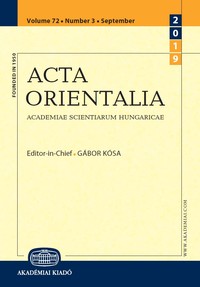THE MULTIPLE FUNCTIONALITY OF THE PRONOUN ʾULĀʾIKA IN THE QURʾĀN
THE MULTIPLE FUNCTIONALITY OF THE PRONOUN ʾULĀʾIKA IN THE QURʾĀN
Author(s): Yehudit DrorSubject(s): Language studies, Turkic languages
Published by: Akadémiai Kiadó
Keywords: demonstrative pronoun; separation pronoun; heaviness; left-dislocation structure; predicate-marker; number-marker; segmentation device
Summary/Abstract: Demonstrative pronouns may function as deictic or anaphoric pronouns. The demonstrative pronoun ʾulāʾika in Arabic is the focus of this paper. It is argued that in the Qurʾān, besides being an anaphoric/resumptive pronoun, which primarily functions as the syntactic subject, it has three additional functions: (1) as a resumptive pronoun of the left-dislocation construction, helping in retrieving the predicate, which usually consists of a short clause following a ‘heavy’ subject. (2) Possibly it has the same function as ḍamīr al-faṣl, ‘separation pronoun’—namely, ʾulāʾika occurs in a simple sentence where it separates a definite subject and a definite predicate. It also occurs between subject and predicate, while both are constructed as relative clauses, and between a ‘heavy’ subject and indefinite predicate. (3) As a number marker in conditional clauses that are headed by the conditional particle man, and two kinds of number agreement are exhibited in the clause: singular and plural.ʾulāʾika in this case marks the transition from the grammatical-number feature associated with man to the notional number of man.
Journal: Acta Orientalia Academiae Scientiarum Hungaricae
- Issue Year: 73/2020
- Issue No: 1
- Page Range: 47-66
- Page Count: 20
- Language: English
- Content File-PDF

